Animation &commercial animation 22 Aug 2011 07:26 am
The Multiplane Camera of Hans Fischerköesen
- Hans Fischerköesen was an animation pioneer in Germany. Because of his asthma, he could not fight in World War I but was sent to work in Army hospitals. Having produced a very popular ad for a shoe company, he established his Fischerköesen Studio in Leipzig to specialize in advertising films. By 1937, he’d won both first and second prizes at a Dutch-sponsored competition for commercials with the runners up including George Pal and Alexander Alexeieff. By this time, Fischerköesen had made around 1,000 publicity films.
When World War II broke out, German cinemas lost the distribution of Disney and other animated shorts. Goebbels sought someone to fill the bill for a German animation studio. Fisherkösen got the job, but received the mandate to work with Horst von Möllendorf, a popular Berlin newspaper cartoonist, as a gag writer-storyman. He was also required to compete with Disney and Fleischer using multiplane effects.
The first film they did, Weather-beaten Melody (1942) almost shows off the technique with a bravura sequence using both the multiplane and stereo-optical processes. It’s this opening sequence that I’m featuring in this post; this is far beyond anything done even in subsequent films. Unfortunately, these frame grabs come from a streaming video, so the quality leaves a lot to be desired.
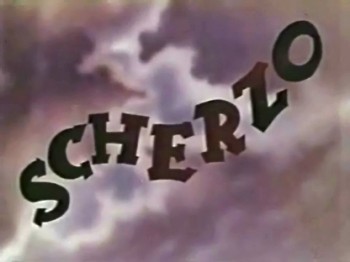 1
1The opening title – Scherzo
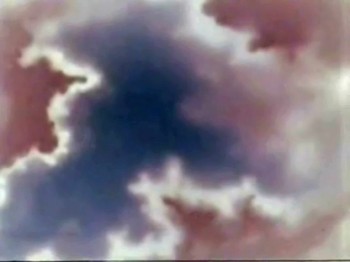 3
3
When the credits fade off, the sky opens up.
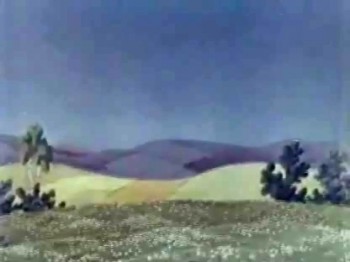 4
4
The camera pans down to a field of flowers.
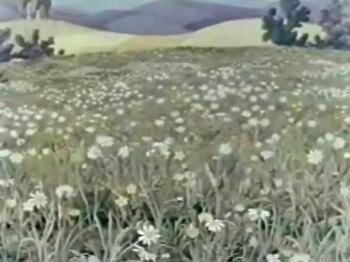 6
6
The camera moves right into those flowers.
This is obviously a stereo-scopic set, much like the Fleischer camera.
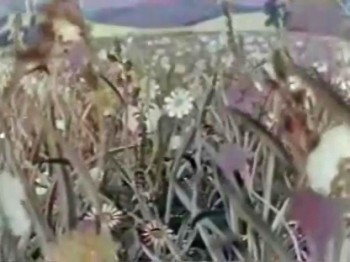 8
8
The camera moves in among the flowers.
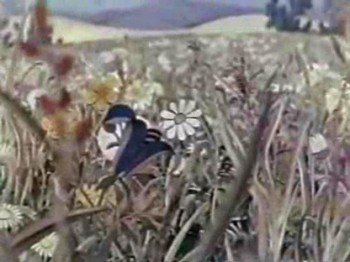 12
12
It reaches a point, and stops.
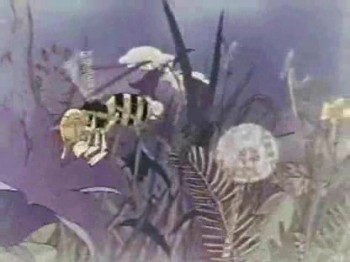 13
13
Cut to our main character, a bumble bee.
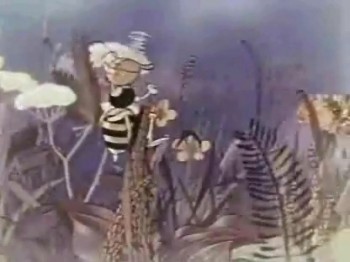 14
14
The bee seems to float in the air rather than fly.
Very odd animation, very attractive multiplane setup.
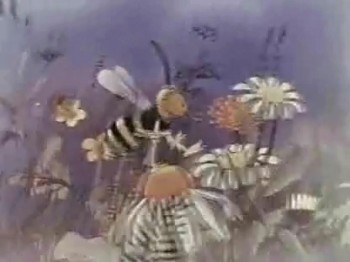 15
15
This is a very long pan, with many multiplane levels.
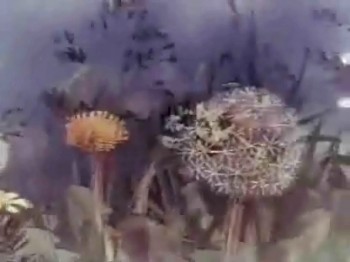 20
20
The bee flies INTO a dandelion.
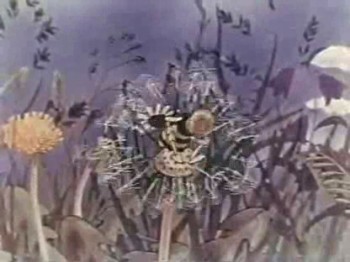 21
21
He sneezes breaking up the dandelion.
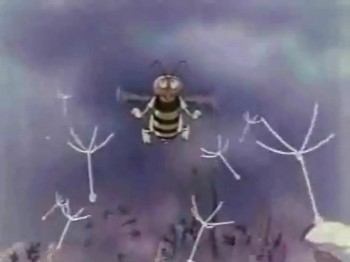 22
22
The bee flies up toward the sky with
dandelion bits all about him.
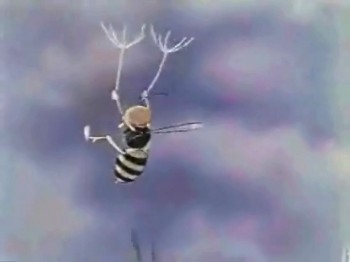 24
24
The bee grabs two fronds of the dandelion
to slow his descent to the ground.
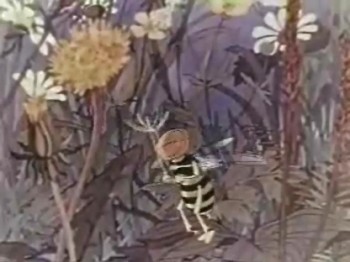 26
26
It folds up the dandelion buds as if
they were umbrellas.
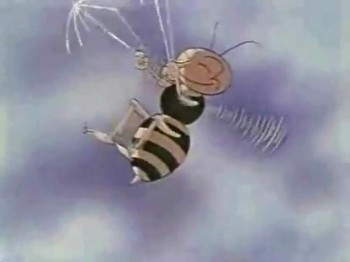 28
28
Again the bee uses the “umbrellas” to float mid-air.
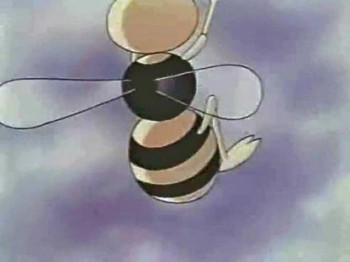 29
29
The bee moves toward the camera in a forced perspective.
The film moves on to follow the bee who finds a gramophone in the grass. With its stinger the bee is able to play the music on the record for the other bugs.
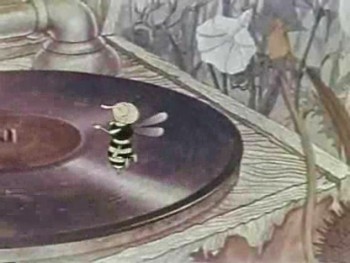 1
1At first the record doesn’t move.
It’s the bee who runs in circles.
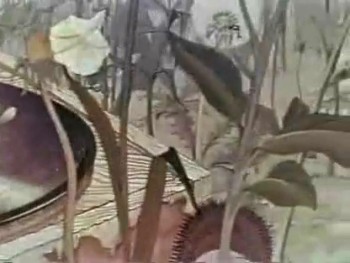 2
2
We pan from the bee in a multiplane shot
toward some other bugs . . .
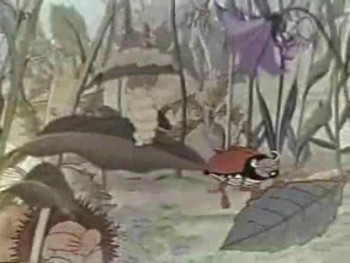 3
3
. . . who are dancing to the jazz music.
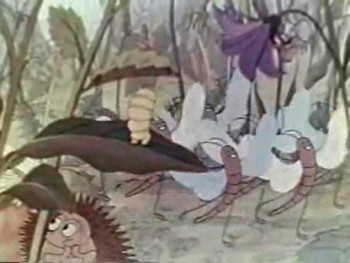 4
4
There’s a group of “June Taylor” type dancers.
The animation is probably rotoscoped, though it’s well done.
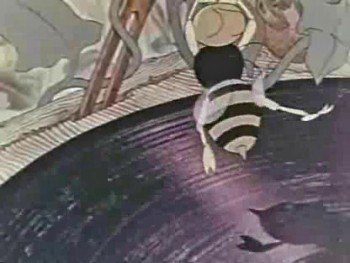 5
5
The bee was exhausted from running in place,
so other bugs and a frog turn the record.
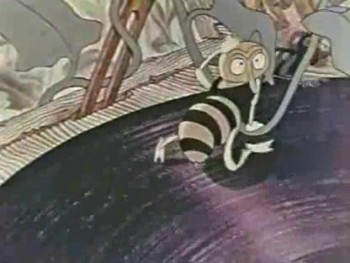 6
6
The bee still falls into exhaustion.
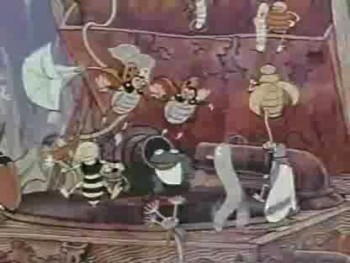 7
7
The final shot shows an overview of the gramophone
and all the bugs getting the music to play and dancing.
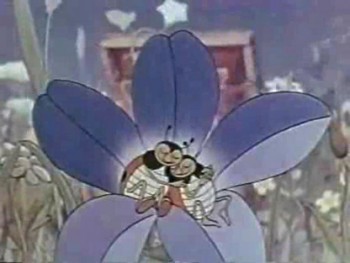 9
9
. . . in another beautiful multiplane shot.
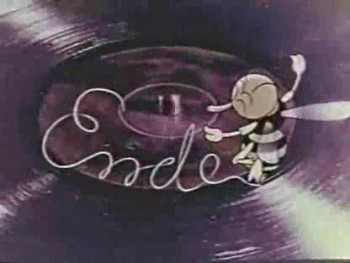 10
10
We end on the bug writing “Ende” with his stinger.
Here is a QT of the movie:
You can find an excellent biography of Fischerköesen by William Moritz here.
He also did several other films during the War. The Snowman (1943) and The Silly Goose (1944). Both use the multiplane, though The Silly Goose uses it in a rather unorthodox way. It’s truly daring.
Fischerköesen continued to make advertising films until 1969, and died in 1973.
The Snowman is part of the DVD The Golden Age of Cartoons: Cartoons for Victory! This is part of the excellent product produced by Steve Stanchfield of Thunderbean Animation.
As I mentioned earlier, the quality of the frame grabs has a lot to be desired. You can find better ones on Hans Bacher’s wonderful site, One1More2Time3′s Weblog. Also there are other films including some of the advertising films.
There is also a letter in the comment section of Hans’ site. I thought it interesting enough that I copied it here:
- from MariaElena Kadala
This were my grandfather’s films … I’m trying to get these pictures into Wikipedia articles about the films, without success. Perhpas you can do it?
While he was imprisoned by the Russians after the war (having been accused of being a Nazi) they asked his workers to provide the secrets of his techniques. They made a duplicate copy of all information, which I inherited, being the lone “techie†among many artistic heirs.
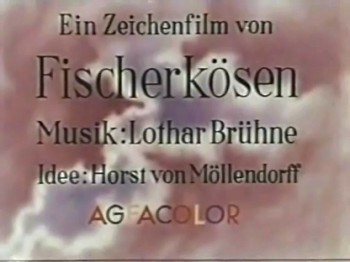
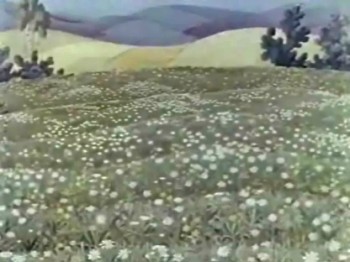
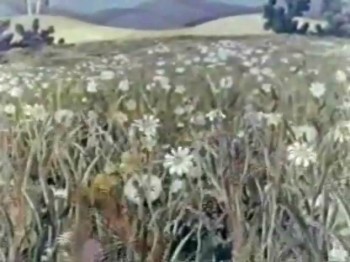
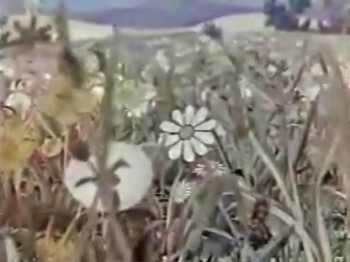
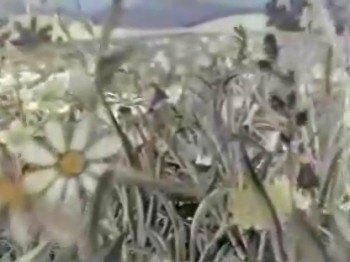
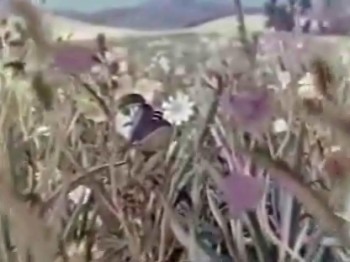
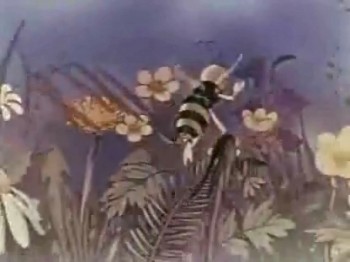
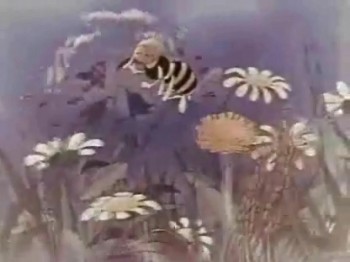
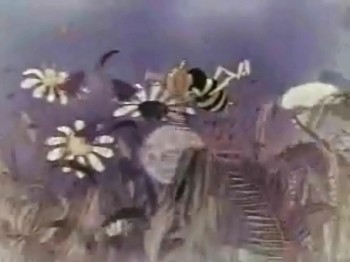
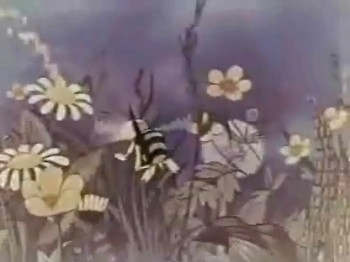
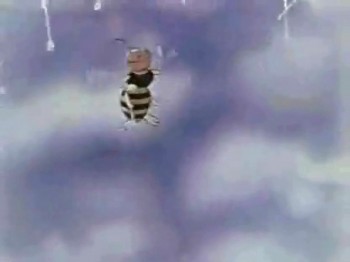
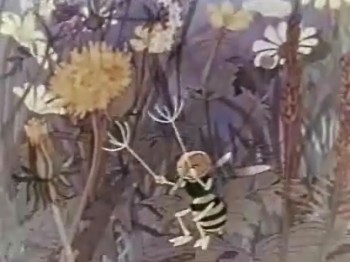
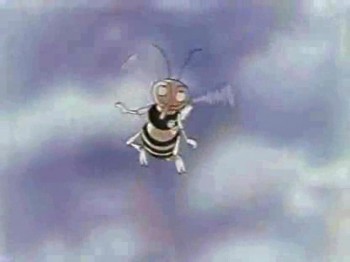
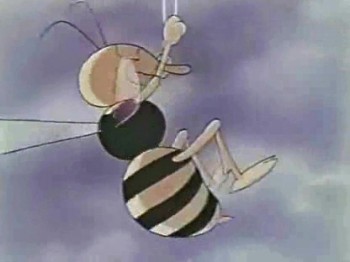
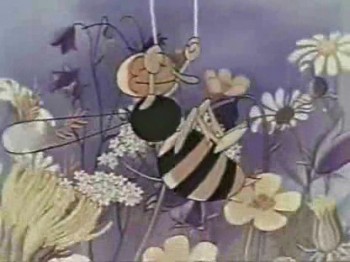
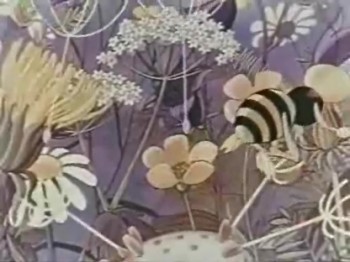
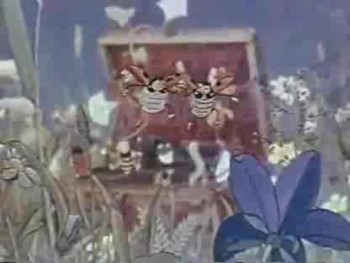

on 22 Aug 2011 at 10:00 am 1.Joel Brinkerhoff said …
The tracking shot down over the flowers is stunning. It appears to me as though the bee were rotoscoped from a dimensional model. Perhaps there was a mixture of stop-motion that was drawn over at times? The flowers around the phonograph appear to be flat and dimensional at the same time, could a similar treatment have been used? Very interesting.
on 22 Aug 2011 at 9:17 pm 2.hans bacher said …
Fischerkoesen’s son was at the time of the shooting of this short the age of 7 or 8. I met him several times and he explained how the set up for that scene looked like. They cut out all of the flowers from cardbord and arranged them in circles around the model of the phonograph. He said the whole scenery filled one bigger room where the camera was moved on a rig through the layers of flowers. The animation was treated similar using 3-dimensional models and rotoscoping them in the end. the whole thing was very time consuming and fischerkoesen’s son, who took over the studio after his father’s death, said, they spend days with the shooting and many things went wrong. His father’s dream was to create something similar stunning as disney’s snow white. and in a way it was kind of the order of ‘the fuehrer’ to copy the technology and quality of snow white which hitler was the biggest fan of. I heard from another german animation pioneer, who had worked during the war years in a huge animation studio in berlin, that goebbels was pushing that industry with the target to produce disney-like films. They built big multiplane camera set-ups, had dozens of animators and inkers and were working on big planned projects. When the war situation became too dangerous in berlin with the constant bombing they only kept there a smaller propaganda animation crew and moved the ‘entertainment’ part under the leadership of horst von moellendorf to prague, where it was a bit safer. There the studio produced a longer short HOCHZEIT IM KORALLENMEER ( wedding in the coralreef ), a very well animated film with beautiful effects work.
on 22 Aug 2011 at 9:57 pm 3.Michael said …
Thank you, Hans,for he extraordinary information about Mr. Fischerkoesen and this very curious film. Even bill Moritz’s biograhy doesn’t include much of what you’ve written.
on 23 Aug 2011 at 7:59 am 4.Don Cox said …
There is a series of 2-DVD sets entitled “Die Geschichte des deutschen Animationsfilm” to be released in Germany on Sept 30 2011.
I think there is some Fischerkoesen on these discs. They will be available from amazon.de and are region-free.
on 23 Aug 2011 at 9:18 am 5.Michael said …
Thanks, Don, for the information about the DVD set to be released. I’ll look forward to it.
on 09 Sep 2011 at 4:27 pm 6.Marvin Dejager said …
thanks!